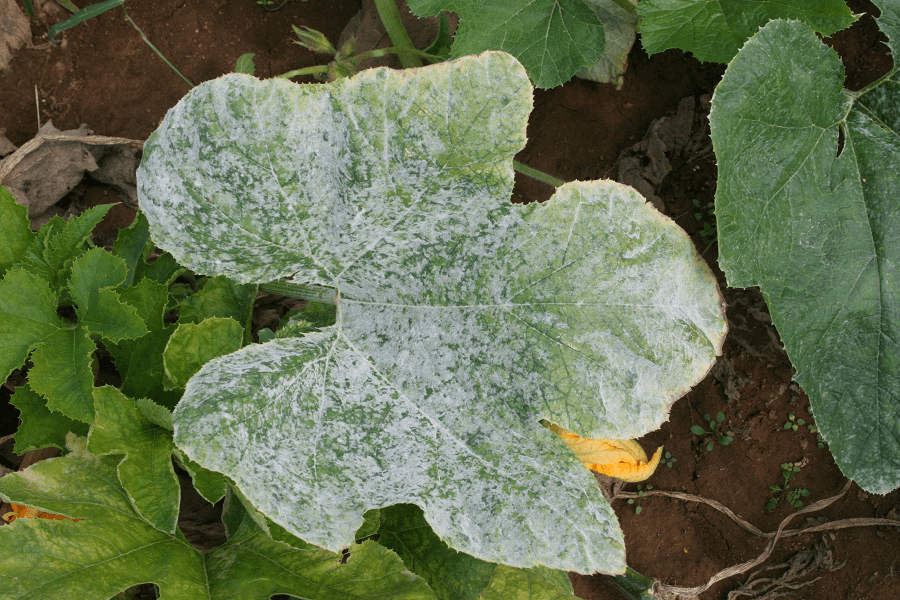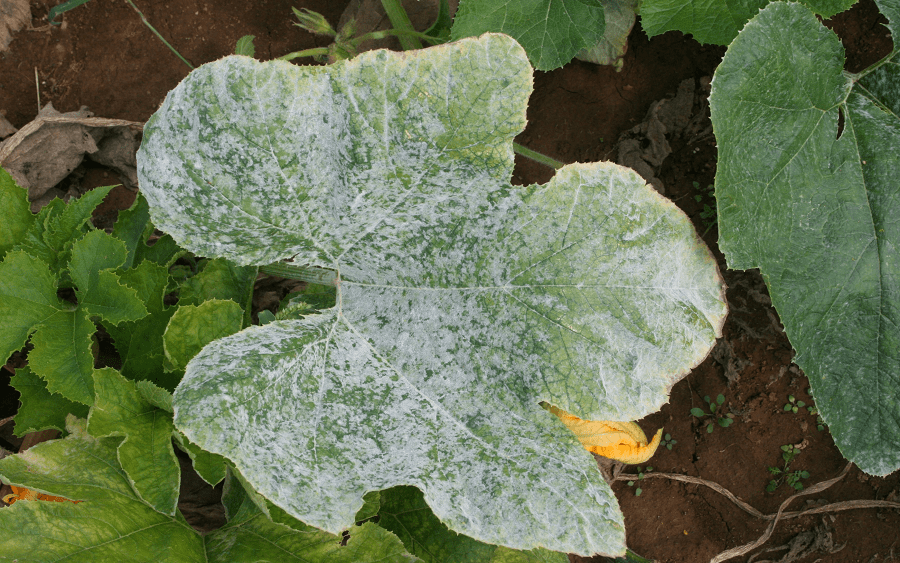Powdery mildew is one of the most easily recognizable diseases of landscape and garden plants. It is the name given to a group of diseases caused by several closely related fungi. Their common symptom is a grayish-white, powdery mat visible on the surface of leaves, stems, and flower petals.
Humidity is an important factor related to the onset and spread of powdery mildew. High relative humidity favors spore formation, and low relative humidity favors spore dispersal, which explains why powdery mildew tends to be a problem when the days are cool, and the nights are humid.
Temperature is also a factor. Although powdery mildew can occur all season long, it is less common during the heat of the summer. Shady areas, areas with poor air circulation, and low areas that trap damp air are ideal environments for disease development.
A wide range of plants are susceptible to powdery mildew: annuals, perennials, shrubs, ornamental and fruit trees, small fruit, and vegetables. While symptoms appear similar on most plants, powdery mildew fungi are usually host-specific. For example, powdery mildew of dogwood cannot infect pumpkins, and powdery mildew of cantaloupe will not infect roses.

Typical symptoms of powdery mildew include dusty fungal growth on surfaces of leaves and on young succulent plant tissue. Powdery mildew may occur as isolated blotches or cover entire leaves, stems, buds, or flowers. As powdery mildew fungi grow over the plant surface, they develop structures that are inserted into plant cells enabling them to extract nutrients necessary for growth and spore production. This results in a general decline in growth and vigor of the host, as well as the common visible symptoms.
Early infections can lead to leaf stunting, curling, or other deformation. On dogwood, for example, leaves may take on a yellowish or reddish cast in summer or may develop reddish blotches or dead, scorched patches. The white powdery growth is not always apparent. Powdery mildew creates other effects that are not readily visible. For example, a severely infected plant may have a reduced level of winter hardiness. Trees have also been observed to leaf out later in the spring after being infected the previous season.
In the fall, small fruiting structures that resemble pepper flakes may be visible to the naked eye. These structures contain overwintering spores that serve as inoculum for the following year. The fungus survives the winter attached to plant parts and plant debris such as fallen leaves. As weather warms in spring, the process begins again.
Management of powdery mildew begins with prevention and optimum plant health. Plants should be properly spaced and thinned for improved air circulation and more rapid leaf drying. Avoid overhead irrigation which raises the level of relative humidity within the plant canopy. If powdery mildew is noticed on a few leaves, simply removing them will help with control. At the end of the growing season, prune out infected stems and remove fallen leaves which can serve as a source of further infection. Resistant cultivars are available for crabapple, dogwood, phlox, zinnia, cucurbits, and several other plants and are an excellent means of disease prevention.
Fungicides usually are not warranted when cultural practices are implemented. However, early-season infection may require one or more applications of effective fungicides. For fungicides to be effective, they must be applied as soon as symptoms are noticed. Product labels will provide information on how often to spray. When ranges are given, use the shorter interval during cool, damp weather. Be sure to cover both the upper and lower surfaces of the leaves.
Homeowners have a wide range of fungicides available. Carefully read labels to confirm that the selected fungicide may be used legally on select plants or that the fungicide is suitable for edible plants. Spectracide Immunox, Bonide Fungonil, Bayer Advanced Disease Control, and Fertilome Liquid Systemic have systemic properties and can be sprayed less often than other products. Products effective against powdery mildew are included below.
Interested in learning more about gardening? Why not join the Master Gardener Program. Training in Christian County starts September 13. Contact the Christian County Extension Office for an application at 270-886-6328.






